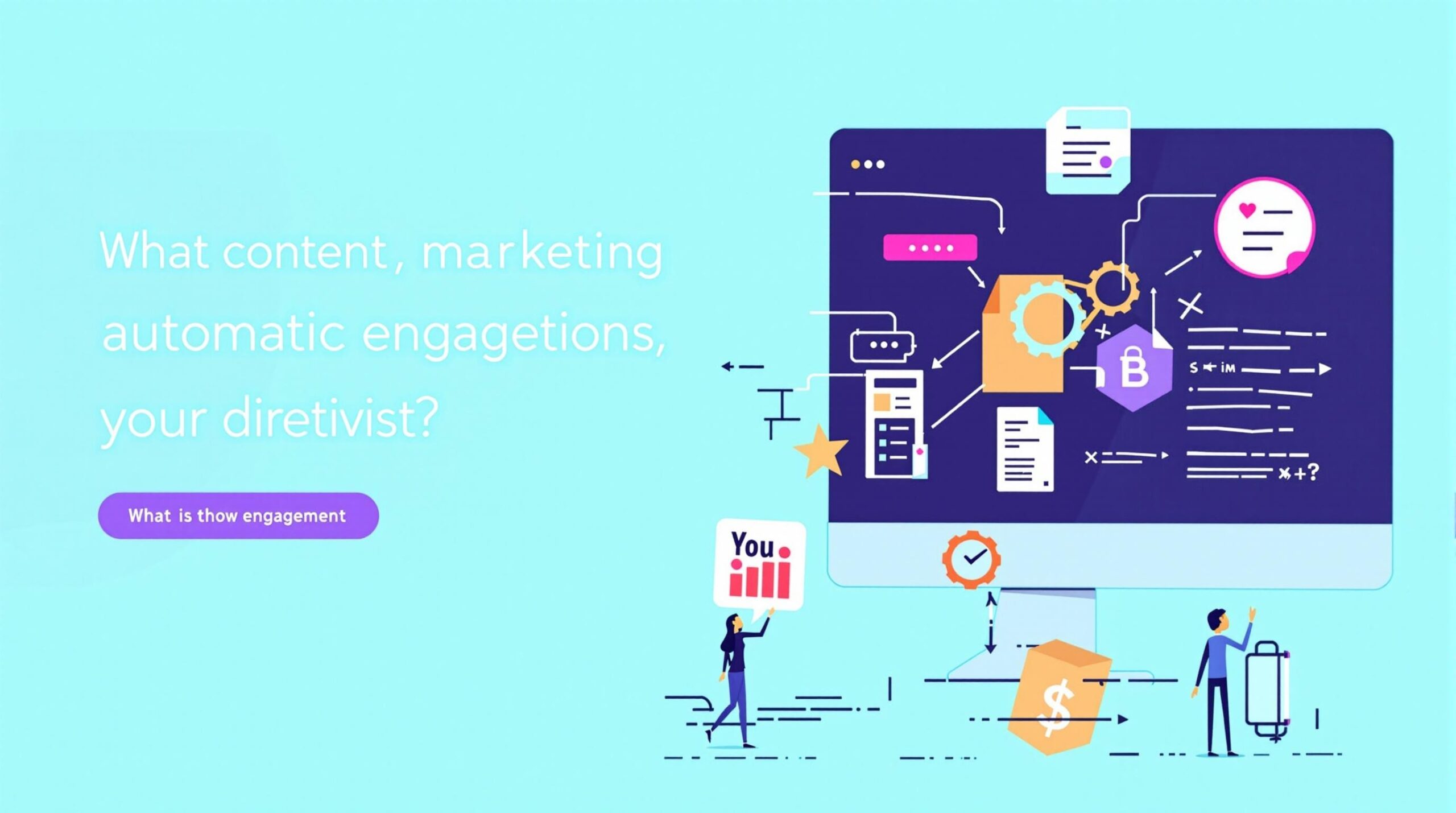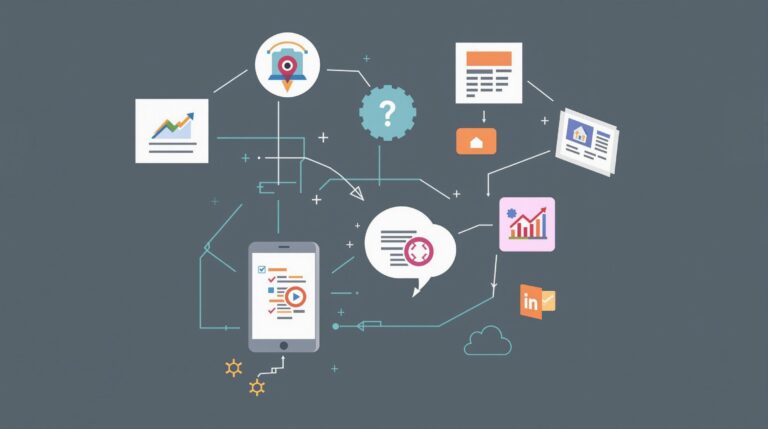How to Automate Your Content Curation Process for Better Engagement
Content curation has become increasingly challenging as the digital landscape grows more crowded with information. Learning how to automate content curation processes can dramatically improve your efficiency while ensuring your audience receives relevant, high-quality content that drives meaningful engagement and interactions.
Key Takeaways
- The content curation software market is valued at $612 million with projected growth of 10% annually through 2032
- Automation reduces manual curation effort by up to 40% while scanning 5x more sources
- AI-powered personalization can increase content engagement metrics by approximately 25%
- A hybrid approach combining automation with human oversight produces the best results
- Implementing the right tools and workflows can save hours while maintaining content quality
The Content Curation Crisis: Why Automation Is the Answer
Today’s content landscape is experiencing a crisis of abundance. With over 80% of marketers citing content overload as a primary challenge, the traditional manual approach to content curation simply can’t keep pace. This is where automation steps in to transform how we discover, organize, and share valuable content.
The numbers tell a compelling story: the content curation software market was valued at $612 million in 2023 and is projected to grow at a 10% compound annual growth rate through 2032, according to Global Market Insights. This rapid expansion directly responds to the increasing difficulty of manually filtering through the vast ocean of content published daily.
Automation solutions don’t just save time—they fundamentally change what’s possible in content curation. While a human curator might review 5-10 sources per hour, AI-powered tools can scan more than 50 sources in the same timeframe, dramatically expanding your content discovery capabilities.

Automation ROI: Time Savings and Performance Metrics
The business case for automated content curation becomes crystal clear when examining the return on investment. Case studies across industries consistently demonstrate significant productivity gains when switching from manual to automated curation workflows.
In the energy sector, for example, companies implementing automation tools reported time savings of up to 40% in their content curation processes. Similarly, banking institutions have successfully leveraged automation to aggregate financial reports and market analyses that would otherwise require teams of researchers to compile manually.
Beyond time savings, automation brings consistency to your content calendar. Rather than experiencing feast-or-famine posting schedules, automated systems can maintain a steady flow of 3-5 quality posts per day without gaps, creating predictability that audiences appreciate and algorithms reward.
The efficiency equation is simple: when you can process more content in less time, you can dedicate more resources to strategy and creative tasks that truly benefit from human intelligence.
Personalization at Scale: How AI Understands Your Audience
Perhaps the most powerful aspect of automated content curation is the ability to personalize content at scale. Modern AI algorithms analyze engagement patterns including click-through rates, time spent on page, and social sharing behaviors to understand what resonates with specific audience segments.
This data-driven approach enables a level of content tailoring that would be impossible to achieve manually. According to iSmartcom, organizations implementing AI-powered personalization in their content curation have seen engagement increases averaging 25% compared to generic content approaches.
The technology also excels at real-time trend detection. While human curators might track a handful of keywords or topics, AI systems can monitor thousands simultaneously, identifying emerging conversations and content opportunities before they become mainstream.
This combination of historical engagement analysis and trend forecasting creates a powerful framework for delivering the right content to the right person at precisely the right moment—the holy grail of content marketing automation.
Essential Tools for Automated Content Curation
Building an effective automation system requires the right set of tools. For WordPress users, several plugins have emerged as leaders in automated curation:
- WP RSS Aggregator: Ideal for automatically importing and displaying content from multiple RSS feeds
- Feedzy RSS Feeds: Offers advanced filtering and customization options
- MyCurator: Uses machine learning to improve content recommendations over time
For social media curation, these platforms provide robust automation capabilities:
- Buffer: Exceptional for scheduling and analytics across multiple platforms
- Hootsuite: Offers comprehensive monitoring and distribution tools
- Quuu: Provides AI-driven content suggestions aligned with your brand voice
Advanced AI tools are taking automated curation to new heights:
- OpenAI’s GPT models: Can summarize and rewrite content to avoid duplication issues
- Scoop.it: Offers real-time curation with intelligent filtering
The ideal approach often involves combining several content automation tools to create a comprehensive workflow that handles discovery, filtering, scheduling, and distribution seamlessly.
Building Your Automation Workflow: Step-by-Step Guide
Implementing an automated content curation system requires a strategic, methodical approach. Follow these steps to create a workflow that delivers consistent results:
First, define measurable goals aligned with your key performance indicators. Whether you’re aiming to increase engagement by 25% or generate more qualified leads, having clear metrics will guide your automation decisions.
Next, select appropriate tools based on your specific use cases and distribution channels. Different platforms excel at different aspects of curation—some are better for discovery, others for redistribution.
Then, configure your automated sources carefully. This typically includes:
- Setting up RSS feeds from trusted industry sources
- Implementing social monitoring for relevant keywords and hashtags
- Creating content filters to ensure relevance to your audience
A particularly effective strategy involves implementing AI summarization tools to avoid duplicate content penalties while maintaining the original information’s value. For instance, combining Google Sheets with ChatGPT creates a powerful system for storing and editing content summaries before distribution.
Finally, establish a review cycle to regularly assess and refine your automation parameters based on performance data. Even the best automation systems benefit from periodic human guidance.
Quality Control in Automated Curation
While automation offers tremendous efficiency gains, quality control remains essential. Research suggests that approximately 30% of auto-curated content may lack necessary context or relevance without human oversight.
To maintain high standards, implement these quality assurance measures:
- Credibility scoring: Platforms like Scoop.it offer tools to evaluate source reliability
- Content filters: Set parameters for word count, topic relevance, and publication date
- Sentiment analysis: Ensure content aligns with your brand positioning
The most successful organizations adopt a hybrid approach, combining AI efficiency with human editorial judgment. In this model, automation handles the heavy lifting of initial discovery and filtering, while human editors provide final approval and contextual framing.
Regular A/B testing also plays a crucial role in maintaining quality. By systematically comparing different content types and sources, you can continuously refine your automation parameters to better match audience preferences.
Cross-Platform Distribution and Scheduling
Once you’ve established reliable content sourcing and quality control processes, effective distribution becomes the next focus area. Social media automation tools can help you maintain consistent branding while adapting content formats to each platform’s unique requirements.
Optimal posting schedules based on audience analytics significantly impact content performance. Rather than guessing when to publish, automation tools can analyze historical engagement data to identify the ideal times for each platform and content type.
Multi-channel content repurposing represents another powerful automation capability. For example, a curated industry report might become a LinkedIn article, several Twitter posts, an Instagram infographic, and a newsletter feature—all automatically adapted and scheduled through a single workflow.
Platforms like Scoop.it have recently enhanced their capabilities to support this cross-platform strategy. Their 2023 platform update specifically improved real-time distribution features, allowing for more responsive content sharing across multiple channels.
Measuring Success: Analytics for Automated Curation
Effective measurement forms the foundation of continuous improvement in automated content curation. The key metrics to track include:
- Engagement: Dwell time, shares, comments, and clicks
- Conversion: How curated content drives desired actions
- Efficiency: Time saved compared to manual processes
- Content diversity: Topical and source variety
Most automation platforms include built-in analytics dashboards that simplify this tracking process. The real value comes from comparing performance before and after implementing automation, which typically reveals both immediate efficiency gains and gradual improvements in audience engagement.
Set up automated reporting to maintain visibility into these metrics without adding manual work. Weekly or monthly performance summaries can highlight trends and opportunities for refinement.
For long-term ROI calculation, combine time savings (typically measured in hours per week) with engagement improvements to develop a comprehensive view of automation’s impact. This data becomes invaluable when making decisions about future investments in curation technology.
Sources
aicontentfy.com – Streamline Content Curation with Automation Tools
bellykm.com – AI-Powered Content Curation Success Stories in Knowledge Management
websitedesignnow.com.au – Automate Content Curation Easily in WordPress for Better Engagement
blog2social.com – Content Curation Blog and Social Media Marketing








